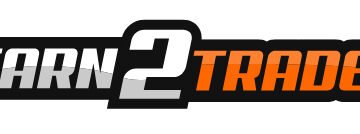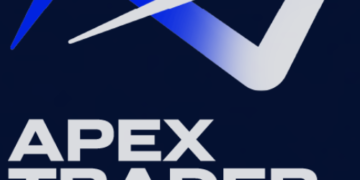Weekly Volume Profile Trading Strategy (NQ & ES) — Institutional Footprint Analysis
Learn how to use Weekly Volume Profile levels to trade ES & NQ futures like a pro. Identify key institutional zones, find high-probability entries, and get exclusive Prop Trading Evaluation Discounts with Apex Trader Funding’s 80% OFF offer!
Introduction: The Institutional Roadmap Hidden in Weekly Volume Profiles
In the world of futures trading, traders often obsess over candlestick patterns, indicators, and small timeframe setups — but the true power lies in understanding where institutions transact.
That’s exactly what the Weekly Volume Profile reveals.
Whether you trade E-mini S&P 500 (ES) or Nasdaq (NQ) futures, paying attention to prior weekly volume profile levels — including the Value Area High (VAH), Value Area Low (VAL), and Point of Control (POC) — can give you a massive edge. These levels tell you where big money participated, where fair value was established, and where potential reversals or continuations may occur this week.
This isn’t theory — it’s how professional prop traders and institutional desks map the battlefield.
What Is the Weekly Volume Profile?
The volume profile displays how much volume traded at each price level over a specific time period. When applied to a weekly chart, it shows where the majority of contracts changed hands during that week.
- POC (Point of Control): The price level with the highest traded volume — the market’s fair value.
- Value Area High (VAH): The upper boundary of the 70% value area, representing where buyers were most active.
- Value Area Low (VAL): The lower boundary, showing where sellers stepped in.
These zones act as magnets and barriers for price in the following week — making them must-watch areas for every serious futures trader.
Why the Prior Week’s Volume Profile Matters
🧠 1. Institutional Memory and “Where Business Was Done”
Each week, institutions accumulate and distribute positions. The areas with heavy volume become “memory zones” for large players.
When price revisits these zones later, it often triggers strong reactions — either defense (holding the zone) or unwinding (reversal).
For example:
If last week’s POC in NQ was 18,250 and price retests it this week, watch closely. That’s where the heaviest institutional transactions occurred — and it’s often a battle zone.
⚖️ 2. Balance vs. Imbalance
Weekly volume profiles help identify whether the market was balanced or trending last week:
- Balanced (D-shaped profile): Indicates price acceptance — expect rotations within last week’s value area.
- Trending (P- or b-shaped profile): Shows directional conviction — expect continuation if price holds above/below value.
When you see a P-shaped profile, it often signals short-covering and potential bullish continuation. A b-shaped profile suggests long liquidation and bearish momentum.
📊 3. Value Area Levels as High-Volume Support and Resistance
Unlike traditional support and resistance lines, weekly VAH/VAL levels are built on real traded volume, not just price extremes.
- Above VAH → bullish acceptance or fake breakout reversal.
- Below VAL → bearish continuation or overshoot recovery.
- Around POC → consolidation and rebalancing zone.
These levels help traders decide whether to trade continuation or mean reversion setups.
🔎 4. Higher Timeframe Context for Intraday Setups
Even scalpers benefit from the weekly profile. It gives context for bias and trade location:
- If the week opens inside last week’s value → expect range behavior until a breakout.
- If it opens above and holds → potential trend week.
- If it opens outside but fails → trap and reversal setup.
When you know where you are relative to the prior week’s value, your intraday reads become significantly more accurate.
🔥 5. Combining Weekly Profiles with Other Tools
The most powerful trade locations come from confluence. Combine the weekly volume profile with:
- Weekly VWAP
- Liquidity zones or equal highs/lows
- Footprint and order flow signals
- Market Profile single prints or gaps
When multiple elements align with last week’s value levels, you’ve found a high-probability zone.
📈 6. Weekly Value Shift = Institutional Sentiment Shift
When the entire value area shifts higher or lower from week to week, it signals a major sentiment change among institutional participants.
- Value shift up → buyers in control → bullish structure
- Value shift down → sellers in control → bearish structure
This weekly context helps traders align their bias, trade direction, and risk management.
Visual Summary: The Trader’s Map
| Level | Meaning | Trading Reaction |
|---|---|---|
| POC | Fair value from last week | Expect rotation or retest |
| VAH | High-volume resistance | Acceptance → trend up / Rejection → fade short |
| VAL | High-volume support | Acceptance → trend down / Rejection → bounce |
| Value Shift | Institutional bias | Up = bullish, Down = bearish |
How Professional Prop Traders Use Weekly Volume Profiles
Top prop traders don’t trade in isolation — they build context maps using volume profiles from multiple timeframes. The weekly profile helps them:
- Identify key institutional footprints.
- Filter out low-quality setups.
- Time entries with order flow confirmation.
- Stay aligned with higher timeframe bias.
It’s one of the simplest but most powerful ways to trade like a professional — not a retail guesser.
Ready to Trade Like a Prop Trader?
To master these strategies with real funding, traders are turning to Apex Trader Funding — one of the best prop trading firms for beginners.
📢 80% OFF Apex Trader Funding Evaluations – Pass in 1 Day! 📢
🚀 Apex Trader Funding Exclusive Offer:
💰 80% OFF all evaluations & future months
💰 Pass in just 1 day!
💰 $50 resets for all evaluations
💰 $140 one-time PA activation fee
💰 Take unlimited evaluations – up to 20 funded accounts!
🔥 Apex has paid out over $564 MILLION to traders!
🔹 Use Code: PROPDEALS at checkout
🔹 Or Click Here: https://tinyurl.com/ApexPropDeals
✅ Get Your Discount | Save Now | Start Your Evaluation
Conclusion: The Weekly Volume Profile Is Your Institutional Compass
The market leaves clues — and the weekly volume profile is one of the clearest footprints left by big money.
Understanding and marking those prior-week levels helps traders:
- Define value and bias
- Anticipate reaction zones
- Align entries with institutional flow
Whether you’re swinging for 70–100 point runners or scalping 10–20 ticks in NQ or ES, knowing last week’s value structure keeps you trading in sync with the real players.






No Comments
Leave Comment